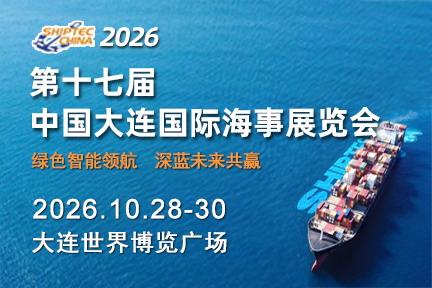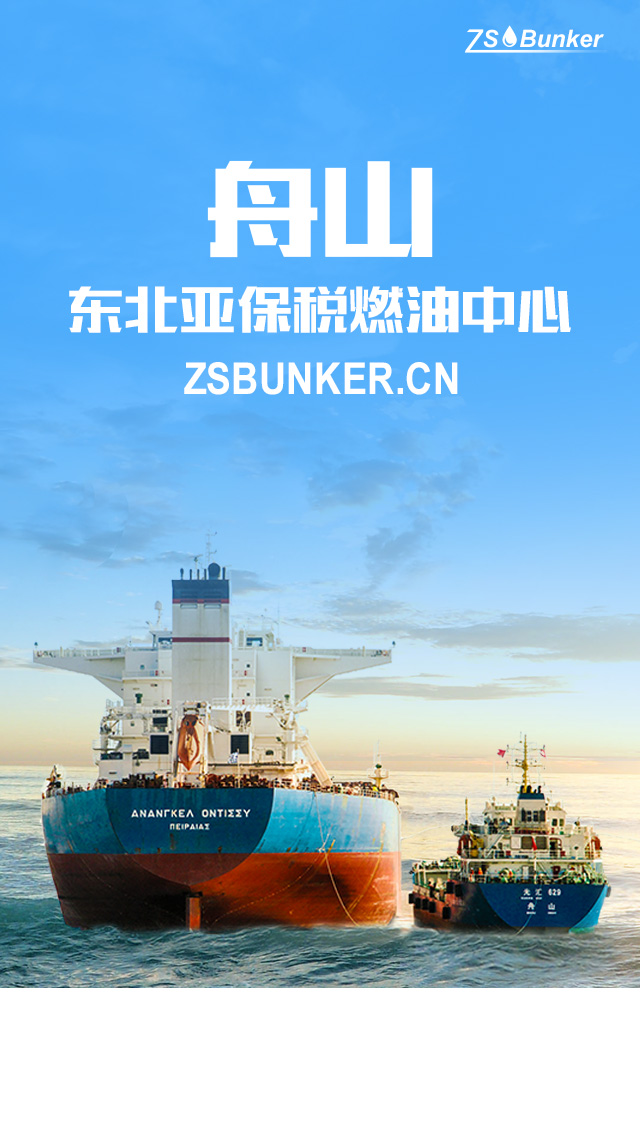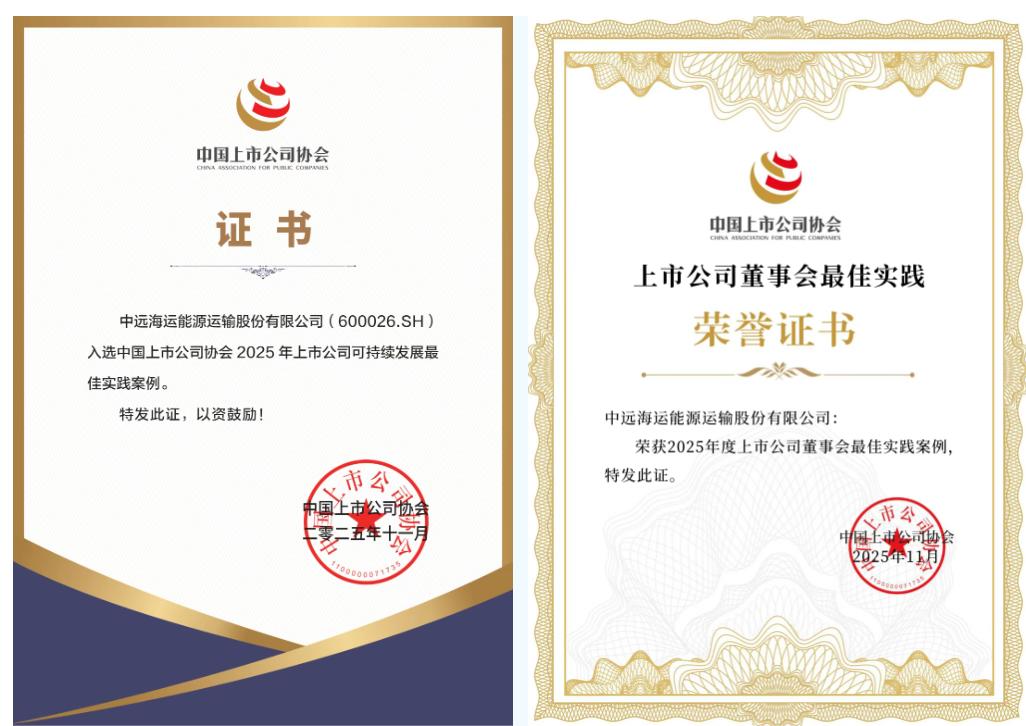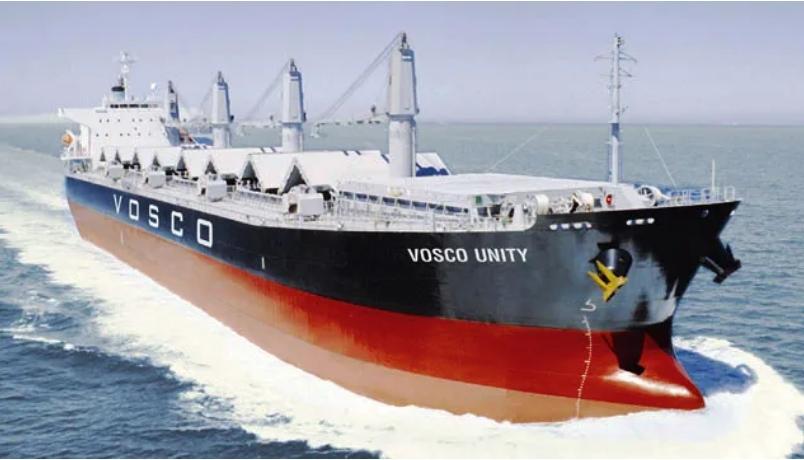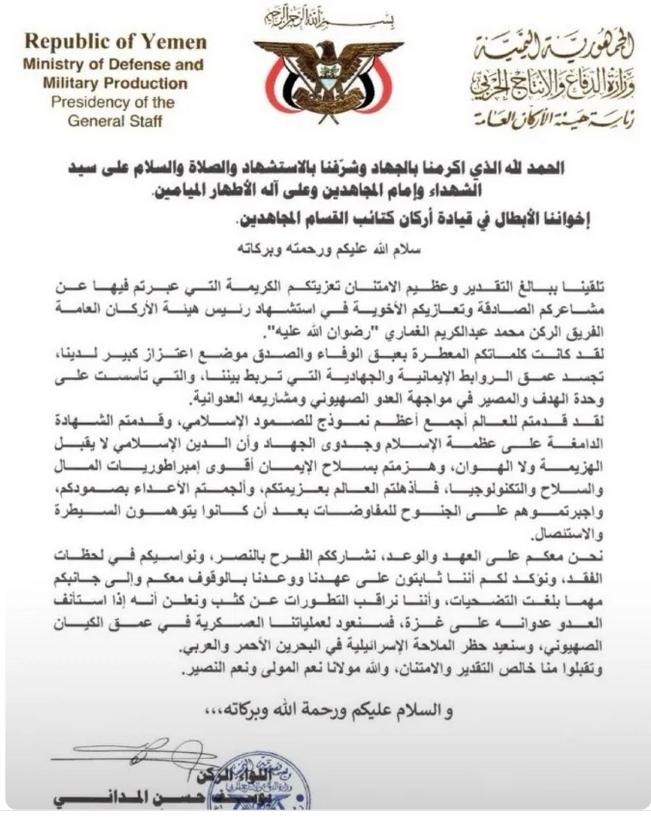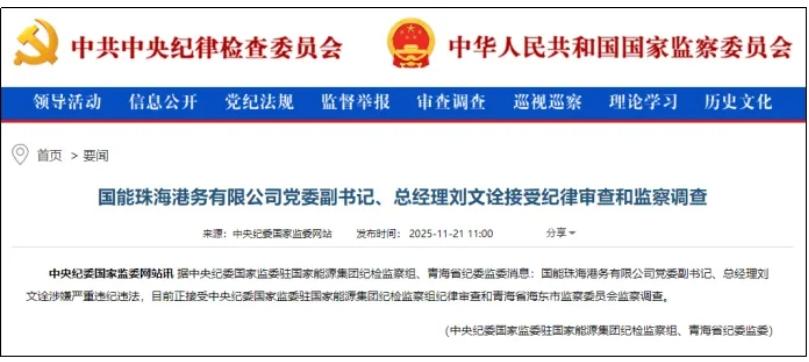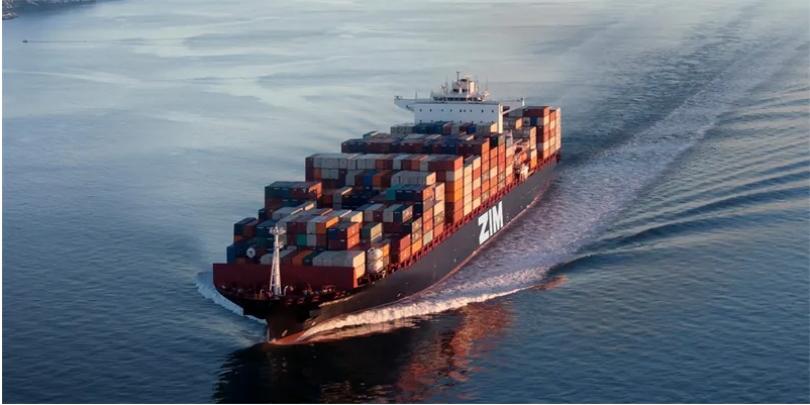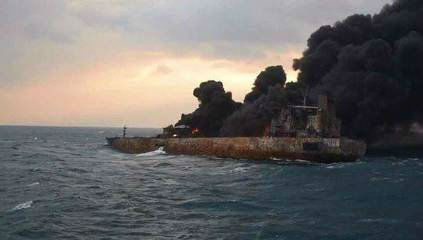
“印度电影《流浪者》中丽达在庭上辩护时,法官说法律不承认良心,丽达机敏地回答:那么良心也不承认法律。虽然这句话没什么用,但是成为了一句经典台词。关于桑吉轮被撞沉,死了那么多的生灵,造成空前的污染这件事情,我做为早年经历航海工作人员,说几句话。“长峰水晶”轮碰撞发生后,船长立即赶到驾驶台,将车钟拉到“停车”的位置。从航海日志和轮机日志中,可以看到碰撞发生时没有减速没有停车,这说明什么?仅仅是驾驶员技术能力的问题吗?是玩忽职守啊!人家全死了失踪了,咱给人家弄个主要责任!这样做怎么让别人来尊重我们?”
这是王先生在“海商海事交流群”就前些天《“桑吉”轮与“长峰水晶”轮碰撞事故原因与责任分析》一文所说的原话;这在我看来,很有份量。如果一个驾驶员对生命都无敬畏之心,那还是趁早别跑船了,赶紧回家。
说实在,本无意对这么大的事故发表任何看法,这不是我的职责所在,我需要做的是干好本职工资,挣钱养家糊口。国内有那么多专家,自有专家对此给出专业的定论。但作为曾经跑过船的一员,看到事故报告中所述,怀着对生命的敬畏,不得不说几句。
首先参微信公众号(船舶管理信息平台)在5月份曾经发表过一篇文章《桑吉轮和长峰水晶轮碰撞事故调查》,“桑吉”轮的雷达截图如下,其中右前方回波较大的为“长峰水晶”轮,弱的为“浙岱渔03187”轮。
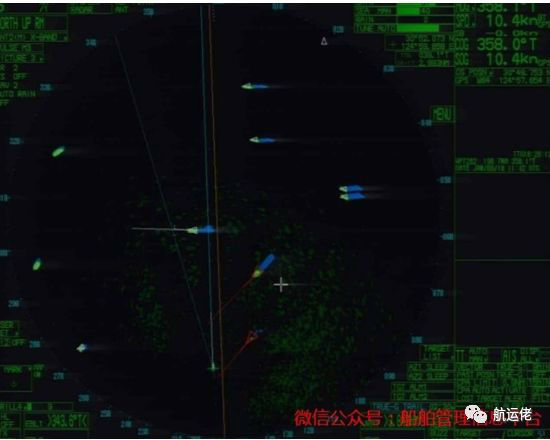
一、事故经过
1、“桑吉”轮
约19:30,GPS船位为30°47′.6N/124°57′.7E,航向358°,航速10.4节,当班驾驶员(三副)评估周围船舶均过本船船尾。
这个表述,“桑吉”轮的三副评估周围船舶均过本船船员,显然情况并不是这样。如下截图所示,至少有船从船头过,而不是均过船尾。从VDR中,“桑吉”轮的三副所说的过船尾的船,是指对他船有可能构成危险局面的几条船,而不是所有船。
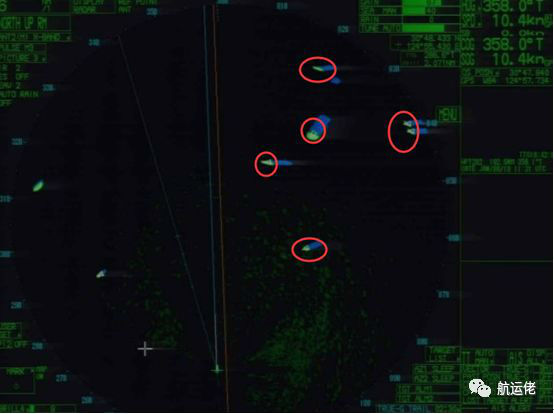
约19:32,三副再次评估了本轮与“长峰水晶”轮的会遇态势,并说“物标A与B船首会遇距离为负”(即“长峰水晶”轮过“桑吉”轮的船尾)。
约19:34,GPS船位为30°48′.3N/124°57′.7E,向、速不变,在交谈中,当班驾驶员与水手都提到方位022°、正在接近本船的物标(“长峰水晶”轮)。
约19:35,X波段雷达的光标移至“长峰水晶”轮的回波,但没能捕获目标,且该轮的AIS信号也不能激活。此时,值班水手提醒在雷达屏幕013°方位上有艘船舶的回波红、绿交替闪烁。
从这些事实可以看出,“桑吉”轮的三副对交叉会遇局面很清楚;值班水手也在瞭望,清楚知道本船右舷有来船。
约19:39,“浙岱渔03187”轮一直在VHF16频道呼叫“桑吉”轮。“桑吉”轮三副说:“哦,他是在呼叫别的船,你知道,永远不要回答这些呼叫。因为你不回答,意味着你不采取行动。而如果你回答了,他好像……与你确认了他的行动。因此,他采取行动,无论他在高频中说些什么,你都不理会他。但如果你没有回答,他将被迫采取行动以使得自己清爽,懂吗?”值班水手说:“这没有遵守我们应该强制遵守的规则……”三副说:“因为我们不懂他们的语言。”
约19:41,GPS船位为30°49′.4N / 124°57′.7E,向、速仍不变。“浙岱渔03187”轮距其大约1.8海里。三副要求瞭望人员给“浙岱渔03187”轮发出摩尔斯灯光信号。值班驾驶员注意到渔船开始向左改变航向。
“桑吉”轮的三副这番说教当然并不正确;渔船可能是用中文在V16频道喊“桑吉”轮,鉴于语言不通,“桑吉”轮的三副要求瞭望人员给“浙岱渔03187”发摩尔斯灯光信号。再看如下,“桑吉”轮的三副对摩尔斯灯光信号运用的还是比较娴熟;相比用英语直接喊话小渔船,用摩尔斯灯光信号显然比英语更为有效。
约19:46,渔船从“桑吉”轮船尾清爽驶过,向“长峰水晶”轮发送摩尔斯灯光信号(5短闪)以吸引注意力。一水说:“C船通过了,对吧?是否向右转一点?”三副:“向右?为什么?”一水说:“你看CPA是多少? CPA是……零,零。”
死者为大,对于“桑吉”轮就不过多评述,也无从评述。现在重点来说说,主流认为处于次要责任的“长峰水晶”轮的情况。
2、“长峰水晶”轮
约19:31,“长峰水晶”轮大副看到“桑吉”轮在本船左侧,距离7海里(笔录数据),他说:“我再次核对了她的动态,发现CPA没有变化,然后就没有对这条船多加注意。”
约19:32,“长峰水晶”轮的GPS船位为30°47'.9N /124°57.7'E,航向216°和航速13.2节。“桑吉”轮约位于方位202°、距离6.8海里处。“长峰水晶”轮大副在雷达上发现了两个目标的CPA分别是0.9海里和0.4海里,他确认CPA0.9的那个是“桑吉”轮并且过本船船首(源于对他的第二次调查)。
这两段调查报告看不出来“长峰水晶”轮大副有什么问题。如果“长峰水晶”轮保向保速的话,与“桑吉”轮能顺利通过。0.9海里的CPA,虽然说余量有点小,但是安全通过还是没有问题。但是该轮大副作出了让笔者感觉非常惊讶的举措,调整航向,而且是往右调整,想回到计划航线上,这种小幅度的改向,直接导致了后面与“桑吉”轮碰撞。
约19:34,“桑吉”轮约位于方位203°、距离6.0海里处,“长峰水晶”轮大副说他开始调整航向从217°调到225°,目的是回到计划航线上,当时“长峰水晶”轮向左偏离了计划航线(源于对他的第二次调查)。
约19:42,“长峰水晶”轮的GPS船位为30° 52′.4N/124°59′.2E,航向转至了225°、航速仍为13.2节,距“桑吉”轮约3.1海里、方位205°。值班驾驶员发现“桑吉”轮AIS目标的CPA变为0.4海里,他认为这是一艘没有碰撞危险的小船。“长峰水晶”轮的大副没有看到“桑吉”轮的雷达回波,只通过左舷雷达上显示的AIS信号确定了与“桑吉”轮的CPA。
在该调查记录中,“长峰水晶”轮大副犯了严重错误。在明知存在会遇紧迫局面的情况下,仍然采取小幅度改向,而且是朝着碰撞的局面改向。其次,没有采取一起有效的手段保持正规的了望。雷达回波的大小并不能直接判断船舶大小,雷达回波的大小只是侧面反映水面上垂直截面的大小,而不是船舶大小。该轮大副还应该结合AIS,以及望远镜查看对方船舶的灯光显示等一切有效手段,而不是仅仅依赖雷达回波。
约19:44,“长峰水晶”轮的GPS船位为30°52′.1N/124°58′.8E,航向225°、航速13.3节。三副通过AIS图标以为“桑吉”轮是渔船(没有雷达回波)并且不存在碰撞危险。约19:45,“长峰水晶”轮的GPS船位为30°52′.N/ 124°58′.7E,航向223°、航速13.4节,“桑吉”轮大约在距其2海里的205°方位上,此时大副接到了船长的电话。
“长峰水晶”轮的三副犯了和该轮大副同样的错误,没有采取一切有效的手段保持正规的了望,而是仅仅凭雷达回波。很显然,该轮大副三副都违反了避碰规则第5条所要求的:每一船在任何时候都应使用视觉、听觉以及适合当时环境和情况的一切有效手段保持正规的了望,以便对局面的碰撞危险作出充分的估计。
Rule 5 Look-out
Every vesselshall at all times maintain a proper look-out by sight and hearing as well as by all available means appropriate in the prevailing circumstances and conditions so as to make a full appraisal of the situation and of the risk of collision.
对于这个一切有效的手段,在《The Arbitrator》2017年2月份第一期中说到:海员应使用适用于当时环境和情况的“一切有效手段”,以保持正规的了望,并确定是否存在碰撞危险(见“国际海上避碰规则”(COLREGS)第5条和第7条)。“一切有效的手段”显然包括安装在船舶上的ECDIS等技术,旨在帮助航行和/或绘制潜在碰撞危险船舶的位置,速度和方向。
Seafarers shall use “all available means” appropriate inthe prevailing circumstances and conditions in maintaining a proper look outand determining if a risk of collision exists (see Rule 5 and 7 of theInternational Regulations for the Prevention of Collisions at Sea (COLREGS)).“All available means” clearly includes technology such as ECDIS installed onvessels designed to aid navigation and/or plot the position, speed anddirection of potential collision risks.
但是,“一切有效的手段”并不意味着在进行避碰和导航决策时仅依赖于ECDIS。 驾驶员必须继续验证这些输入,包括查看驾驶台窗户外并监控接近船舶的轴承运动,以确保对情况和碰撞风险进行全面评估。尽管有其他导航设备的帮助,但仍需要良好的视觉观察,因为这些辅助设备可能需要时间来计算(或在AIS的情况下,传输)信息,因此在某些情况下提供的信息在很大程度上是历史性的。
However, “all available means” does not mean relying solely on ECDIS when making collision avoidance and navigational decisions. The operator must continue to validate those inputs, including by looking out the bridge window and monitoring the bearing movements of approaching vessels, toensure that a full appraisal of the situation and risk of collision is made.Good visual lookouts are necessary, notwithstanding the assistance of other navigational aids, as such aids can take time to calculate (or in the case ofAIS, transmit) information and therefore provide information that is in some cases, to an appreciable extent, historic.
这在近距离情况和交通繁忙的地区尤其重要,因为驾驶员(特别是新的驾驶员)可以被吸引到ECDIS显示屏并错失现场态势感知(ECDIS旨在克服的确切事物)。 还有一些驾驶员无疑会信任ECDIS上显示的内容,这可能会给他们带来虚假的安全感。虽然ECDIS是一种有价值的导航辅助工具,但不受欢迎的副作用是一些值班人员会以遵守COLREGS为代价来维持航迹。在ECDIS时代,不能忘记或丢失传统的航海技能。虽然作为航海辅助设备的ECDIS远远超过传统的纸质海图,但我们必须了解其局限性并确保我们使用“一切有效的手段”来保持正规的了望并确定是否存在碰撞危险。
This is particularly important in close-quarters situations and heavy traffic areas as operators (particularly new operators)can be drawn into an ECDIS display and lose
situational awareness (the exact thing ECDIS was designedto overcome). There is also a danger that some operators unquestioningly trustwhat is displayed on ECDIS, which may give them a false sense of security.While ECDIS is a valuable navigation aid, an unwelcome side effect is that some watchkeepers will favour track maintenance at the cost of complying with COLREGS.
Traditional navigational skills must not be forgotten orlost in the age of ECDIS. While ECDIS, as an aid to navigation, far surpassesthe traditional paper chart, we must understand its limitations and ensure weuse “all available means” in maintaining a proper look out and determining if arisk of collision exists.
参照这些,可以看出“长峰水晶”轮的大副和三副都过分,单方面依赖雷达,没有采取一切有效的手段保持正规了望,未能对现场碰撞危险作出正确的评估,从接下来的记录更可以看出。
约19:46,“长峰水晶”轮的GPS船位为30 °51′.8N/124°58′.4E,向、速不变。大副向三副交班,并告诉三副周围清爽,没有向三副交代其他船舶的会遇态势;三副没有看到“桑吉”轮的信号,然后,在三副的确认下大副离开了驾驶台。在大副离开后不久,三副班的值班水手进入驾驶台开始接班,交班水手在离开驾驶台之前告诉接班水手把定航向226°及自动舵的工况。
此时“桑吉”轮已经使用摩尔斯信号,但是“长峰水晶”轮的大副和三副以及值班水手均没有发现摩尔斯信号;也许察觉了,但是不知道是什么意思。在之前,“浙岱渔03187”在V16频道喊“桑吉”轮的时候,要求避让;笔者感觉“浙岱渔03187”会在V16频道里破口大骂“桑吉”轮,因此很难理解为何“长峰水晶”轮的大副没有意识到,或者注意到“桑吉”轮。渔船尚且能发现“桑吉”轮,为何“长峰水晶”轮发现不了,还错误以为是小船。唯一合理的解释是,大副三副都采取有效的手段进行了望。
现在来看看避碰规则第34条第4款关于五次短而急的闪光信号的解释。
(d) When vessels in sight of one another are approaching each other and from any causeeither vessel fails to understand the intentions or actions of the other, or isin doubt whether sufficient action is being taken by the other to avoid collision, the vessel in doubt shall immediately indicate such doubt by givingat least five short and rapid blasts on the whistle. Such signal may besupplemented by a light signal of at least five short and rapid flashes.
即当互见中的船舶正在互相驶近,并且不论由任何原因,任何一船无法了解他船的意图或行动,或者怀疑他船是否正在采取足够的行动以避免碰撞时,存在怀疑的船应立即用号笛鸣放至少五声短而急的声号以表示这种怀疑。该声号可以用至少五次短而急的闪光来补充。
“桑吉”轮作为让路船,理论上讲应该大幅度右转,驶过让清“长峰水晶”轮;但是如果两条船都保向保速的话,也能安全驶过。然而,此时“长峰水晶”由原来的航向216°慢慢调整到了226°,是朝着碰撞而去,且小幅度调整航向。“桑吉”轮无法了解“长峰水晶”的意图或行动,发了摩尔斯灯光信号,遗憾的是“长峰水晶”轮大副三副均未能及时察觉并获知。
约19:47,值班水手提醒三副“桑吉”轮在雷达荧光屏上的AIS目标与我船的CPA仅为0.2海里。三副也通过雷达观察了这个目标并且认为这是一艘小船。
约19:48,值班水手提醒三副目标与我船的CPA仅为0.1海里。
从该证词能合理得出的结论水手的水平挺高,不时提醒三副CPA值太小,有碰撞危险;而三副的知识水平严重不足,没有利用一切有效手段对局面作出正确的评估,严重依赖雷达,且盲目。违反了避碰规则第七条,(c)Assumptions shall not be made on the basis of scanty information, especiallyscanty radar information.不应当根据不充分的资料,特别是不充分的雷达观测资料作出推断。
约19:49,“长峰水晶”轮的GPS船位为30°51′.4N/124°57′.9E,向、速仍不变,值班水手再次提醒三副我船与AIS目标的CPA为0.1海里,但并没有注意到目标船是“桑吉”轮。然后三副让值班水手将自动舵改为手动舵,令其操右舵却没有告知具体的操舵角度。当舵角达到右舵20°时,值班水手向三副报告了。
从这里可以看出,该轮三副直接违反了避碰规则第八条,避免碰撞的行动,中全部如下条款:
(a) Any action taken to avoid collision shall, if the circumstances of the case admit, be positive, made in ample time and with dueregard to the observance of good seamanship.
1、为避免碰撞所采取的任何行动应根据本章各条规定,并且,如当时环境许可,应是积极的,及早地进行和充分注意运用良好的船艺。
(b) Any alteration of course and/or speed to avoid collision shall, if the circumstances of the case admit, be large enough to bereadily apparent to another vessel observing visually or by radar; a successionof small alterations of course and/or speed should be avoided.
2、为避免碰撞而作的航向和(或)航速的任何变动,如当时环境许可,应大得足以使他船用视觉或雷达观察时容易察觉到;应避免对航向和(或)航速作一连串的小变动。
(c) lf there is sufficient sea room, alteration of course alone may be the most effective action to avoid a close-quarters situationprovided that is made in good time, is substantial and does not result inanother close-quarters situation.
3.如有足够的水域,则单用转向可能是避免紧迫局面的最有效行动,倘若这种行动是及时的、大幅度的,并且不致造成另一紧迫局面。
(d) Action taken to avoid collision with another vesselshall be such as to result in passing at a safe distance. The effectiveness ofthe action shall be carefully checked until the other vessel is finally pastand clear.
4.为避免与他船碰撞而采取的行动,应能导致在安全距离驶过。应细心查核避让行动的有效性,直到最后驶过让清他船为止。
(e) If necessary to avoid collision or allow more time toassess the situation, a vessel shall slacken her speed or take all way off bystopping or reversing her means of propulsion.
5.如需为避免碰撞或留有更多的时间来估计局面,船舶应当减速或者停止或倒转推进器把船停住。
约19:50,“长峰水晶”轮的GPS船位为30°51′.1N/ 124°57′.6E。“长峰水晶”轮船首撞在“桑吉”轮第2、3号右压载舱之间的右舷,与货舱的撞击角度约为48°,这次碰撞造成了“长峰水晶”轮船首的严重损坏,以及“桑吉”轮3号货舱之前的主甲板和舱盖严重变形。随后的火灾导致“长峰水晶”轮的左舷舷墙和部分甲板设施的损坏。碰撞发生后,船长立即赶到驾驶台,将车钟拉到“停车”的位置。
约19:51,“长峰水晶”轮的船长通过VHF16频道播发“求救信号”,将车钟拉倒“全速后退”的位置,并提到他因情况太紧急而没有意识到备份VDR(船舶黑匣子)信息的事。接着他发出了“弃船”的指令,随后,船员们通过船尾的自由降落救生艇撤离,并由渔船“浙岱渔03187”救出。
从这两段证词看,“长峰水晶”轮的船长所采取的措施,也非完全准确;在撞了他船之后,如果马上倒车,很容易给被撞船舶造成二次伤害,比如货舱大量进水。在本次事故中,还可能导致“桑吉”轮的货舱突然大量接触空气导致燃爆,从而导致最终船毁人亡的重大悲剧。唯一庆幸的是,“长峰水晶”轮的船员全身而退,被救起。
“桑吉”轮被认定负主要责任,“长峰水晶”轮负次要责任;该悲剧似乎可以盖棺定论了,但情况真的是这样吗?笔者认为并非如此。专家们作出这种认定过于草率,没有对生命的敬畏之心,而且对避碰规则也仅仅停留在表面阶段,并没有深层次理解。那么接下来就来看看法官在The “Vechtstroom”案中的判决陈词。
在The“Vechtstroom”[1964] 1 Lloyd’sRep.118案中,碰撞事故发生在英国利物浦边上的Mersy河(默西河)。一条轮渡船Claughton轮在1960年12月12日早上8点前抵达Woodside,右舷靠泊,等候利物浦那码头的空位。当时有雾,按当时的条件,岸上的雷达站会在早上8点到9点左右发布雾航警报,包括号钟。但是在8点约11分左右,Claughton轮在未收到雷达站发布的消息的情况下,就解缆调头离开,意图直接橫穿默西河到利物浦靠泊,航向东北偏北。调头后Claughton轮按雾航要求鸣放一长声。
随后Claughton轮船长收到Seacombe雷达站的口头警告,说正前方有船,应该立即停下;该轮船长于是停车。该轮船长事后声称对方船在其右前方,构成了交叉会遇局面。因为有雾,能见度不良,事后发现为右前方的为The “Vechtstroom”轮。当时的情景,简单绘图如下。Claughton轮想横穿默西河到利物浦,Vechtstroom轮沿着默西河正常往上游航行。
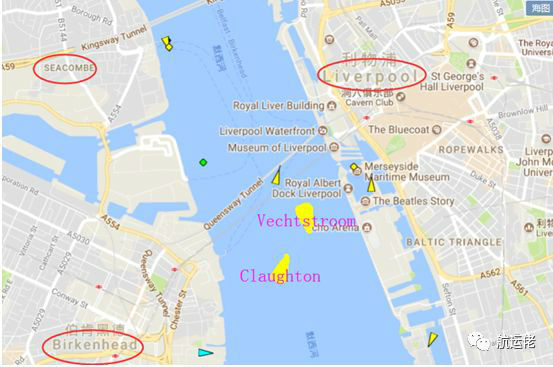
此时Vechtstroom轮仍然是全速;当Claughton轮也听到从Vechtstroom轮鸣放的一短汽笛声,紧急之下,Claughton轮立即左推进器全速,右推进器停车,打右满舵,并鸣一短汽笛。但是Vechtstroom轮并没有减速的迹象,在听到了Vechtstroom轮的三短声之后,Claughton轮立即将左推进器停车,改右推进器全速,并打左满舵。但是遗憾的是没有驶过让清,最终Vechtstroom轮呈直角撞到了Claughton轮左舷梯子口附近,导致Claughton轮损坏,无法继续服务。
有一点是关于Vechtstroom轮的最终速度,即她在碰撞时的速度。Claughton轮的代表律师认为,Vechtstroom轮在碰撞时的速度大约是8到9节。但是Vechtstroom轮的船长认为,他的船为一艘带有四叶螺旋桨的机动船,具有非常好的制动力,并且当时的吃水及横倾适中,可以很好有效地停车,因此碰撞的时候速度大约四节。事故调查员对碰撞速度的看法是三到四节。Claughton轮在这次直角碰撞中没有受到很大的伤害,虽然该轮的大量木质橡胶可能会受到很大的打击。
考虑到这个证据,Hewson法官与年长老资格的专家讨论这个碰撞时的速度问题,长者们认为Vechtstroom轮在碰撞的速度可能是在水中五六节左右,Hewson法官表示认同。
Claughton轮的代表律师认为提交了该轮不应该因为她做了什么或者她没做什么而应该受到指责,从目击到碰撞时,因为Vechtstroom轮不顾一切地忽视了由于能见度受限以及Vechtstroom轮未发放声音信号并及时采取适当的速度,Claughton轮处于意外和迫在眉睫的危险境地。在这种情况下,他提出,Claughton轮不应该因为做出错误的操作而受到指责。Hewson法官正如他所发现的那样,在他所描述的情况下,船舶彼此可见,对于这位经验丰富的河流人士来说,这一点应该是显而易见的,这位Claughton轮的船长已经渡轮渡过了43年,无论他做了什么,他都不应该往右转向。
Now, as I have found the ships were visible to each other in the circumstances I have described, the one thing that should have been immediately obvious to this very experienced river man, the master of the Claughton, who has been 43 years on ferries, was that whateverelse he did he should not starboard.
Vechtstroom轮的代表律师认为,Claughton轮不应该离开Woodside,而且当她这样做时,她不应该私自采取行动,除非她收到了她向Seacombe请求的交通状况报告。Claughton轮在她没有这样一份报告而采取行动是疏忽的,这种疏忽导致了碰撞。当她离开Woodside码头时,Claughton轮船长知道浓雾不清的雾状况,尽管她无法确定雾处于凝滞状态。Woodside的能见度是300英尺到400英尺。所要求的报告,Claughton轮并被告知她会在几分钟内得到它,但是,尽管如此,Claughton轮仍然担心尽可能接近在利物浦的靠泊安排,在没有报告的情况下就提早离开横船默西河。
在判决陈词中,Hewson法官首先说Claughton轮,认为就Claughton轮而言,碰撞的主要原因和由此造成的伤害是她往右转向意图通过Vechtstroom轮的船艏。事实上Claughton轮正是这么做,Hewson法官认为Claughton轮应该从她的位置开始保持航向,或者更好的是,向左转向。在这种情况下,向右转向,是她不应该做的一件事。Claughton轮选择向右转向显然没有经过思考。
Let me deal first with the Claughton. So far as she is concerned, the principal cause of the collision and the resulting damage was her starboarding across the bows of the Vechtstroom, which I find she did,from the position in which she should have held her course or, even better,turned to port. Starboarding was the one thing in those circumstances which she should not have done. She did that apparently without thought.
Hewson法官认为他毫不怀疑Claughton轮为了收到报告而不等待两到三分钟是不明智的。但是如果没有它,是否疏忽,如果是这样,这种疏忽是否是造成碰撞的一个促成因素?必须记住,这次碰撞是在1960年发生的,在那时雷达的使用变得相当普遍,而在那一年里,Claughton轮已经为她提供了关于在恶劣天气下交通状况的现成信息。几年前,这些设施当然是未知的,但当天早上它们肯定可以使用,并且在过去的几个月就可使用。
Hewson法官认为应该对所提供的设施进行适当使用的问题是他与长者们讨论的问题,如果他可以这样说,他全心全意地同意他们提出雷达建议的这些设施,为更高的航运安全性提供和建立,以提高航行的准确性。事实上,这个特殊的Seacombe雷达站是由一家渡轮运营公司他们自己建立的。Hewson法官认为只能假定它是为了一个好的目的设在那里,并在那天早上盛行的有雾的情况下使用。故意忽视这种援助的船舶不仅暴露自己,而且暴露于其他航运风险,即海员般谨慎的风险可以而且应该被消除。Hewson法官认为正如他所看到的那样,运输时有义务在现成的情况下使用这些辅助工具-当他说“随时可用”时,他并不是说即时可用-如果他们选择忽视这些辅助工具,他们自行承担风险。如果Claughton轮已经等了两三分钟,那么很有可能她会收到关于Vechtstroom轮接近的重要信息,因为谨慎会决定留在原地,直到碰撞危险结束或机动航行,与Claughton轮所做的不同,以避免任何近距离的情况。Hewson法官认为在他看来,船舶的安全,无论是渡轮还是任何其他类型的船舶,比为了方便一些乘客而保持紧凑的时间安排具有更大的重要性。Claughton轮离开的原因是为了维持靠泊安排,同时依靠雾信号试图向其他船舶表明他们存在;且期望在几分钟内将收到Seacombe站发布的交通信息。
A vessel which deliberately disregards such an aid when available is exposing not only herself, but other shipping to undue risks,that is, risks which with seamanlike prudence could, and should, be eliminated.As I see it, there is a duty upon shipping to use such aids when readily available-and when I say "readily available" I am not saying instantly available-and if they elect to disregard such aids they do so at their own risk. If the Claughton had waited two or three minutes there is a high probability that she would have received vital information as to the approach of the Vechtstroomwhen prudence would have dictated either that she remained where she was untildanger of collision was over or manoeuvred in a way different from what she didto avoid any close-quarter situation. It seems to me that the safety of theship, be she ferry or any other kind of ship, is of vastly greater importancethan the maintenance of a tight schedule for the convenience of a few passengers.
Hewson法官认为他对Claughton轮的船长表示了相当的同情,他曾在Birkenhead渡轮上度过了一生,并且雷达的好处是新奇的本质。几分钟后,当他离开Woodside时,他吹响了他的号声。但必须记住,即使在斑驳的雾中,任何时刻的能见度都会受到不匀称密度的限制。船长说得非常清楚:“我处于迷雾中,我已经准备好承担我们从中驶离的风险。”当然,他依靠的事实是,他没有听到任何其他船舶发出的声音信号,并得出结论认为没有任何可能影响他航行的信息。当然,众所周知,雾中的声音信号可能是反复无常的,但直到几年前,声音信号才是表明其他人接近的唯一手段。在1960年,有一个更加确定和准备好的指示,延迟很短,大约两三分钟,而且在Hewson法官看来,Claughton轮应该等待接收这些信息。在那个场合,她没有等到她可以得到的信息,因为她没有获得信息,而是单独信任声音信号,她把自己置于一个危险的位置,而这是可以谨慎地避免。因为没有避免,Claughton轮的船长发现自己处于一个他完全没有准备的位置,在Hewson法官看来,Claughton轮的船长在鲁莽行事。
I have considerable sympathy for the master of the Claughton who has spent a life time in Birkenhead ferries and to whom the benefitof radar was in the nature of a novelty. He sounded his whistle as he left Woodside, and again a few minutes later; but I must remember that even inpatchy fog visibility at any moment is limited by the density of the patch. The master said quite plainly: "I was in fog and I was prepared to take therisk that we would run out of it." He was, of course, relying upon the fact that he heard no sound signals from any other vessels and concluded that there was nothing likely to affect his navigation. It is well known, of course,that sound signals in fog may be capricious, but until a few years ago sound signals were the only means available to indicate the approach of others. In1960 there was a more certain and ready indication available with very shortdelay, about two or three minutes, and, in my view, the Claughton ought to havewaited to receive that information. She did not wait for information availableto her on that occasion and, because she failed to obtain the information but went out trusting alone to sound signals, she put herself in a dangerous position which could, with prudence, have been avoided. Because it was not avoided the master of the Claughton found himself in a position for which he was wholly unprepared and, in my view, acted recklessly
Hewson法官这个判决并不是一个容易的问题,但得出结论,在这种情况下,船长故意无视他可获得的信息来源,将自己置于一个非常危险的境地,就像法官所说的那样,他本可以避免的。在这种情况下,虽然这只是次要的促成因素,Hewson法官认为Claughton轮的船长在不等待信息时疏忽了。
It has not been an easy question to decide, but I have come to the conclusion that in the circumstances of this case the master, who deliberately disregarded the source of information available to him, put himself into a very dangerous position which, as I say, he could have avoided. In those circumstances, although it is only a secondary contributory cause, I find that he was negligent in not awaiting information. So much for the Claughton.
但是Hewson法官认为,Vechtstroom轮也无法逃避责备。Claughton轮的代表律师一直针对Vechtstroom轮提出观点,Hewson法官认为不能不理会。 Vechtstroom轮的引航员很清楚他正在接近渡轮交通运营的区域。他知道,或者应该知道,在河的西边,他的能见度正在恶化,尽管也许并不像河的东边那么多。他没有在河的东边航行,他正在西边航行。即使如他自己所说的,在Wallasey渡轮阶段时,Vechtstroom轮也保持了大约12.12节的全速,她无法看到比Woodside码头北端更远的距离,有三节锚链长度的距离。对于一个在默西河有经验的人来说,Hewson法官认为在他看来,引航员没有理由在那天早上不意识到他正迅速接近能见度有限的区域。Vechtstroom轮的引航员和任何其他目击者都没有听到当时由Wallasey渡轮码头和Woodside码头响起的雾信号。Hewson法官认为Vechtstroom上的那些人,尤其是那个早上的引航员,应该意识到他们正在接近距离Woodside至少半英里的能见度有限的区域,并且这样的情况,接近12.12节,应采取激烈的行动,以降低她的速度并施放雾信号。很可能如果她施放雾声信号,他们就会听到Claughton轮上的人的声音,如果他们被听到,他们会警告Claughton轮,Vechtstroom轮的存在和接近。
TheVechtstroom cannot escape blame either. Mr. Hene has made his points one by one against the Vechtstroom which I cannot disregard. The pilot of the Vechtstroom well knew that he was approaching an area where ferry traffic operated. He knew, or ought to have known, that the visibility was deteriorating ahead of him on the west side of the river, though not perhaps as much to the east side of the river. He was not navigating in the east side of the river; he wasnavigating in the west side. The Vechtstroom maintained her full speed of about 1212 knots even when, on her own story, approaching Wallasey ferry stage she was unable to see farther than the north end of Woodside stage, a distance ofsomething like three cables. To a man experienced in the River Mersey it is noexcuse, in my view, that he did not appreciate on that morning that he was rapidly approaching an area of restricted visibility. Neither the pilot nor anyother witnesses in the Vechtstroom heard the fog signals at that time being sounded by both the Wallasey ferry stage and the Woodside stage. It is a matterwhich I thought proper to discuss with the Elder Brethren. Their advice, with which I entirely agree, is that those on board the Vechtstroom, and especiallythe pilot, on that morning ought to have appreciated that they were approaching an area of restricted visibility at least half a mile down river from Woodside and, in such circumstances, approaching at 1212 knots, should have takendrastic action to reduce her speed and sounded fog signals. It may well be thatif she had sounded fog signals they would have been heard by those on board the Claughton and, had they been heard, would have warned the Claughton of the Vechtstroom's presence and approach.
有观点认为Vechtstroom的船长间歇性地看着雷达,应该在听到Claughton轮长时间号声之前的某个时候,意识到Claughton轮离开Woodside阶段。Hewson法官接受这样的建议,可能很难理解渡轮正停靠在码头上,并且在船长因没有观察到这一点而受到批评之前必须采取一些小的自由度。事实上,Claughton轮已离开了码头。在听到号声响起之前,ewson法官并没有因为没有观察到这艘小船在这个小屏幕上的移动而过度批评Vechtstroom的船长。
Some point has been made that the master of the Vechtstroom, who was intermittently looking in the radar, ought to have appreciated at some time before the hearingof the long blast from the Claughton that the Claughton had moved away from the Woodside stage. It was a small P.P.I.* and I am advised, and I accept the advice, that it might have been extremely difficult to appreciate that the ferry was lying at the stage and some little latitude must be applied before the master is criticized for not observing that the Claughton had in fact moved away from the stage. I am not in the circumstances inclined to be undulycritical of the master of the Vechtstroom for not observing the movement ofthis small ship on this small screen before her whistle was heard.
还有一点,当Vechtstroom轮听到长时间声号时,她未停车。根据船长的说法,维持了一定的速度,或者按照引航员的说法维持-这无关紧要。然而,如果有时间采取激烈行动的话。令人意外的是,没有意识到前方有大雾,他们未做任何事,如减少对水速度12.12节的速度,而这是她应该停车并将它们全速后退的时候,没有理由说她不应该这样做。该轮正在进入一个相当强劲的退潮。根据Vechtstroom轮船长的证据,这是一艘可操纵的船,应该在所有这些情况下采取激烈的行动让她安全离开,但她没有这样做。出于这些原因,Hewson法官认为Vechtstroom轮应该受到责备。
对于所承担的责任比例问题,Hewson法官认为毫无疑问,造成这次碰撞的最大原因是Claughton轮在他所提到的情况下完全不正确向右转向,并且考虑到这一点,认为区分责任程度是恰当的。最终判两者都要承担,Claughton轮承担三分之二, Vechtstroom轮承担三分之一。
There is a further point, that when the long blast was heard by the Vechtstroom she failed to stop her engines. She kept them, according to the master, or put them,according to the pilot-it does not matter which-at slow. If, however, there wasa time for drastic action it was then. Taken by surprise, not having appreciated there was fog ahead, they did nothing more than reduce to slowahead a vessel proceeding at 1212 knots through the water. This was a time when she should have stopped her engines and put them full speed astern. There was no reason at all why she should not. She was heading into a fairly strong ebb tide. She was a manoeuvrable ship, on her own master's evidence, and she ought in all those circumstances to have taken drastic action to get her way off. She did not do it. For those reasons I find that she is to blame.
Now what about the proportions? There is no doubt that the largest contributory cause for this collision was the wholly improper starboarding of the Claughton in the circumstances to which I have referred and, with that well in mind, I think it is a proper case to distinguish the degrees of blame.
I find bothto blame, with the Claughton two-thirds and the Vechtstroom one-third.
总结:
纵观事故发生前的事实记录,“桑吉”轮与“长峰水晶”轮均违反了避碰规则第5条,疏于了望;在构成了第7条的碰撞危险后,没有采取第6条所规定的安全航速,没有考虑到雷达使用的局限性;未采取第8条规定的有效行动来避免碰撞。为了学习的目的,再详细引援相关条款如下:
Rule 5 Look-out
Every vessel shall at all times maintain a proper look-out by sight and hearing as well asby all available means appropriate in the prevailing circumstances andconditions so as to make a full appraisal of the situation and of the risk of collision.
第五条了望
每一船在任何时候都应使用视觉、听觉以及适合当时环境和情况的一切有效手段保持正规的了望,以便对局面的碰撞危险作出充分的估计。
Rule 6 Safe speed
Every vessel shall at all times proceed at a safe speed so that she can take proper and effective action to avoid collision and be stopped within a distance appropriate to the prevailing circumstances and conditions.
In determining a safe speed the following factors shall be among thosetaken into account:
第六条安全航速
每一船在任何时候都应以安全航速行驶,以便能采取适当而有效的避碰行动,并能在适合当时环境和情况的距离以内把船停住。在决定安全航速时,考虑的因素中应包括下列各点:
By all vessels:
(i)the state of visibility;
(ii)the traffic density including concentrations of fishing vessels or any othervessels;
(iii)the manoeuvrability of the vessel with special reference to stopping distance and turning ability in the prevailing conditions;
(iv) at night the presence of background light such as from shore lights or from backscatter of her own lights;
(v) the state of wind, sea and current, and the proximity of navigational hazards;
(vi) the draught in relation to the available depth of water.
对所有船舶:
(1)能见度情况;
(2)通航密度,包括渔船或者任何其他船的密集程度;
(3)船舶的操纵性能,特别是在当时情况下的冲程和旋回性能;
(4)夜间出现的背景亮光,诸如来自岸上的灯光或本船灯光的反向散射;
(5)风、浪和流的状况以及靠近航海危险物的情况;
(6)吃水和可用水深的关系。
(b)Additionally, by vessels with operational radar:
(i)the characteristics, efficiency and limitations of the radar equipment;
(ii) any constraints imposed by the radar range scale in use;
(iii)the effect on radar detection of the sea state, weather and other sources ofinterference;
(iv)the possibility that small vessels, ice and other floating objects may not bedetected by radar at an adequate range;
(v) the number, location and movement of vessels detected by radar;
(vi)the more exact assessment of the visibility that may be possible when radar isused to determine the range of vessels or other objects in the vicinity.
2.对备有可使用的雷达的船舶,还应考虑:
(1)雷达的特性、效率和局限性;
(2)所选用的雷达距离标尺带来的任何限制;
(3)海况、天气和其他干扰源对雷达探测的影响;
(4)在适当距离内,雷达对小船、浮冰和其他漂浮物有探测不到的可能性;
(5)雷达探测到的船舶数目、位置和动态;
(6)当用雷达测定附近船舶或其他物体的距离时,可能对能见度作出更确切的估计。
第七条碰撞危险
Rule 7 Risk of collision
(a) Every vessel shall use all available means appropriate to the prevailing circumstances and conditions to determine if risk of collision exists. If there is any doubt such risk shall be deemed to exist.
1.每一船舶都应使用适合当时环境和情况的一切有效手段断定是否存在碰撞危险,如有任何怀疑,则应认为存在这种危险。
(b) Proper use shall be made of radar equipment if fitted and operational, including long-range scanning to obtain early warning of risk of collision and radar plotting or equivalent systematic observation of detected objects.
2.如装有雷达设备并可使用的话,则应正确予以使用,包括远距离扫描,以便获得碰撞危险的早期警报,并对探测到的物标进行雷达标绘或与其相当的系统观察。
(c) Assumptions shall not be made on the basis of scanty information, especially scanty radar information.
3.不应当根据不充分的资料,特别是不充分的雷达观测资料作出推断。
(d) Indetermining if risk of collision exists the following considerations shall be among those taken into account:
(i) such risk shall be deemed to exist if the compass bearing of an approaching vessel doesnot appreciably change,
(ii) such risks may sometimes exist even when an appreciable bearing change is evident, particularly when approaching a very large vessel or a tow or when approaching a vessel atclose range.
4.在断定是否存在碰撞危险时,考虑的因素中应包括下列各点:
(1)如果来船的罗经方位没有明显变化,则应认为存在这种危险;
(2)即使有明显的方位变化,有时也可能存在这种危险,特别是在驶近一艘很大的船舶或拖带船组时,或是近距离驶近他船时。
第八条避免碰撞的行动
Rule 8 Action to avoid collision
(a) Any action taken to avoid collision shall, if the circumstances of the case admit, be positive, made in ample time and with due regard to the observance of good seamanship.
1、为避免碰撞所采取的任何行动应根据本章各条规定,并且,如当时环境许可,应是积极的,及早地进行和充分注意运用良好的船艺。
(b) Any alteration of course and/or speed to avoid collision shall, if the circumstances of the case admit, be large enough to be readily apparent to another vessel observing visually or by radar; a succession of small alterations of course and/or speed should be avoided.
2、为避免碰撞而作的航向和(或)航速的任何变动,如当时环境许可,应大得足以使他船用视觉或雷达观察时容易察觉到;应避免对航向和(或)航速作一连串的小变动。
(c) lf there is sufficient sea room, alteration of course alone may be the most effective action to avoid a close-quarters situation provided that is made in good time,is substantial and does not result in another close-quarters situation.
3.如有足够的水域,则单用转向可能是避免紧迫局面的最有效行动,倘若这种行动是及时的、大幅度的,并且不致造成另一紧迫局面。
(d) Action taken to avoid collision with another vessel shall be such as to result inpassing at a safe distance. The effectiveness of the action shall be carefully checked until the other vessel is finally past and clear.
4.为避免与他船碰撞而采取的行动,应能导致在安全距离驶过。应细心查核避让行动的有效性,直到最后驶过让清他船为止。
(e) If necessary to avoid collision or allow more time to assess the situation, avessel shall slacken her speed or take all way off by stopping or reversing hermeans of propulsion.
5.如需为避免碰撞或留有更多的时间来估计局面,船舶应当减速或者停止或倒转推进器把船停住。
6.(1)A vessel which, by any of these Rules, is required not to implede the passage or safe passage of another vessel shall, when required by circumstances of thecase, take early action to allow sufficient sea-room for the safe passage ofthe other vessel.
6.(1)根据本规则任何规定,要求不应妨碍另一艘船舶的通过或安全通过的船舶应根据当时环境的需要及早地采取行动以留出足够的水域供他船安全通过。
A vessel required not to impede the passage or safe passage of another vessel is notrelieved of this obligation if approaching the other vessel so as to involverisk of collision and shall, when taking action, have full regard to the actionwhich may be required by the Rules of this part.
(2)如果在接近其他船舶致有构成碰撞危险时,被要求不应妨碍另一艘船舶的通过或安全通过的船舶并不解除这一责任,且当采取行动时,应充分考虑到本章条款可能要求的行动。
A vessel the passage of which is not to be impede remains fully obliged to comply with the Rules of this part when the vessels are approaching one another so as toinvolve risk of collision.
(3)当两船相互接近致有构成碰撞危险时,其通过不应被妨碍的船舶,仍有完全遵守本章各条规定的责任。
再来看第15条,交叉相遇的局面。
Rule 15Crossing situation
When two power-driven vessels are crossing so as to involve risk of collision, the vessel which has the other on her own starboard side shall keep out of the way and shall, if the circumstances of the case admit, avoid crossing ahead of the other vessel
第十五条交叉相遇局面
当两艘机动船交叉相遇致有构成碰撞危险时,有他船在本船右舷的船舶应给他船让路,如当时环境许可,还应避免横越他船的前方。
本来“桑吉”轮应该大幅度右转避让,但是“浙岱渔03187”轮正在其右方,因此环境并不许可。
接着来看第16条,让路船的行动。
Rule 16 Actionby give-way vessel
Every vessel which is directed by these Rules to keep out of the way of another vessel shall, so far as possible, take early and substantial action tokeep well clear.
须给他船让路的船舶,应尽可能及早地采取大幅度的行动,宽裕地让清他船。
如前文所述,“桑吉”轮未采取大幅度行动,如果“长峰水晶”轮保向保速的话,并不会导致碰撞,因此这并不是导致碰撞的根本原因。
再来看第17条,直航船的行动。
Rule 17 Actionby stand-on vessel
(a) (i) Whereby any of these Rules one of two vessels is to keep out of the way the other shall keep her course and speed.
1.(1)两船中的一般应给另一船让路时,另一船应保持航向和航速。
(ii) The latter vessel may however take action to avoid collision by her manoeuvre alone, as soon as it becomesapparent to her that the vessel required to keep out of the way is not takingappropriate action in compliance with these Rules.
(2)然而,当保持航向和航速的船一经发现规定的让路船显然没有遵照本规则条款采取适当行动时,该船即可独自采取操纵行动,以避免碰撞。
(b) When, from any cause,the vessel required to keep her course and speed finds herself so close thatcollision cannot be avoided by the action of the give-way vessel alone, she shall take such action as will best aid to avoid collision.
2.当规定保持航向和航速的船,发觉本船不论由于何种原因逼近到单凭让路船的行动不能避免碰撞时,也应采取最有助于避碰的行动。
(c) A power-driven vessel which takes action in a crossing situation in accordance with sub-paragraph(a)(ii) of this Rule to avoid collision with another power-driven vessel shall,if the circumstances of the case admit, not alter course to port for a vesselon her own port side.
3.在交叉相遇的局面下,机动船按照本条1款(2)项采取行动以避免与另一艘机动船碰撞时,如当时环境许可,不应对在本船左舷的船采取向左转向。
(d) This Rule does not relieve the give-way vessel of her obligation to keep out of the way.
4.本条并不解除让路船的让路义务。
“长峰水晶”轮虽然在本事故中处于直航船的位置,但是起码应当保持航向和航速。但非常遗憾的是,所采取的行动,不是有助于避碰的行动,而是直接导致了碰撞。如Hewson法官在The “Vechtstroom”案中所说的,虽然Claughton轮是让轮船,但是在当时的局面下,导致碰撞的真正原因是Claughton轮向右转向,意图通过Vechtstroom轮的船艏。Hewson法官Claughton轮应该从她的位置开始保持航向,或者更好的是,向左转向。在这种情况下,向右转向,是她不应该做的一件事。Claughton轮选择向右转向显然没有经过思考。
Let me deal first with the Claughton. So far as she is concerned, the principal cause of the collision and the resulting damage was her starboarding across the bows of the Vechtstroom, which I find she did,from the position in which she should have held her course or, even better,turned to port. Starboarding was the one thing in those circumstances which she should not have done. She did that apparently without thought.
“长峰水晶”轮无论如何都不应该在那种局面下,选择向左转向,试图回到计划航线上。如Hewson法官所说,Claughton轮的船长发现自己处于一个他完全没有准备的位置,在Hewson法官看来,Claughton轮的船长在鲁莽行事。
She did not wait for information available to her on that occasion and, because she failedto obtain the information but went out trusting alone to sound signals, she putherself in a dangerous position which could, with prudence, have been avoided.Because it was not avoided the master of the Claughton found himself in a position for which he was wholly unprepared and, in my view, acted recklessly
“长峰水晶”轮也一样,选择向左小幅度调整航向,将她自己处于一个该轮大副三副完全没有准备的位置上,是在鲁莽行事。
对于所承担的责任比例问题,如Hewson法官所认为的毫无疑问,造成这次碰撞的最大原因是Claughton轮在他所提到的情况下完全不正确向右转向,并且考虑到这一点,认为区分责任程度是恰当的。最终判两者都要承担,Claughton轮承担三分之二, Vechtstroom轮承担三分之一。
Now what about the proportions? There is no doubt that the largest contributory cause for this collision was the wholly improper starboarding of the Claughton in the circumstances to which I have referred and, with that well in mind, I think it is a proper case to distinguish the degrees of blame.
因此,在笔者看来,造成这次碰撞的最大原因是“长峰水晶”轮在那种情况下完全不正确地向左转向,应该承担主要责任。虽然“桑吉”轮作为让路船应该让路,但是不让路并不会导致最终碰撞。碰撞的真正原因是“长峰水晶”轮选择向左转向。如Claughton轮在当时的情况下,按避碰规则,应该选择向右转向,但是Hewson法官认为,选择向右转向才是导致碰撞的真正原因。回到“长峰水晶”轮身上来,无论如何,都不应该向左转向。避碰规则的本意不是让人盲目遵从,但主旨肯定不是允许一方可以采取导致碰撞的鲁莽行动。
从现有的资料来看,看不出“长峰水晶”的船员有什么良好的航海技能;除了认定“桑吉”轮负主要责任,在几十条人命面前,似乎没有敬畏,而是选择了原谅自己。如一个人行走在机动车道上,是否就意味着可以撞死他?然后以他未遵守交通规则来免除自己的责任,原谅自己?作为一个有担当的人,笔者认为不应该选择推脱责任,轻易选择原谅自己。前事不忘后事之师,如果轻易选择原谅自己,那么在良心上很容易会将此悲剧遗忘。这也是在这出悲剧之后,除了遵守避碰规则之外,还应该思考的深层次问题。
修改于2018.07.07香港。
海运圈聚焦专栏作者 Alex (微信公众号 航运佬)

 2018-07-07
2018-07-07 2267
2267 




